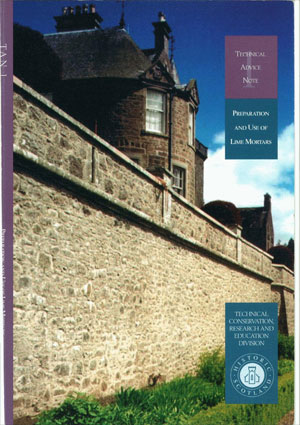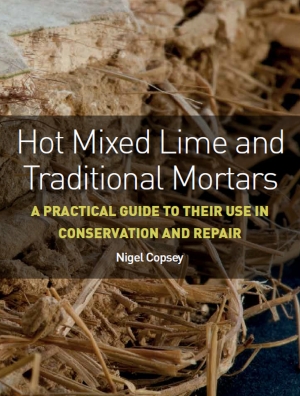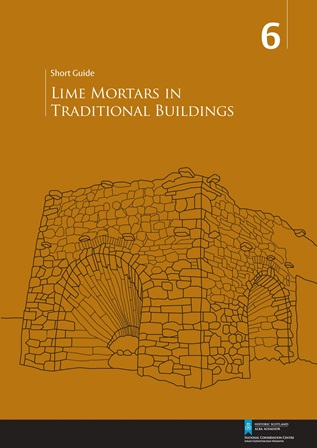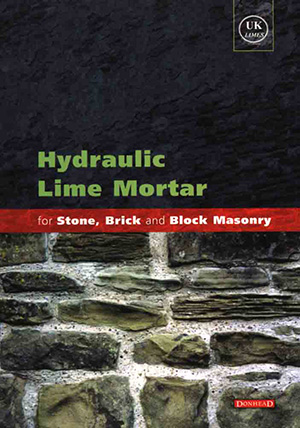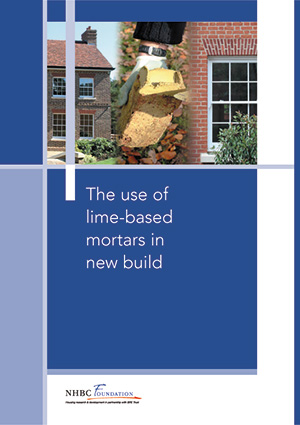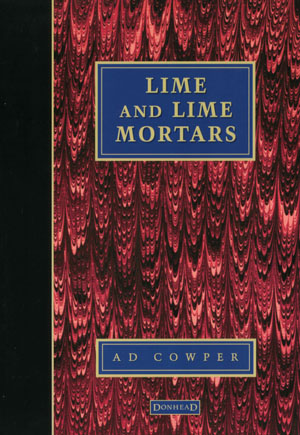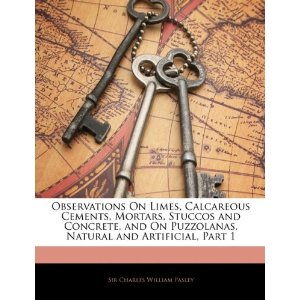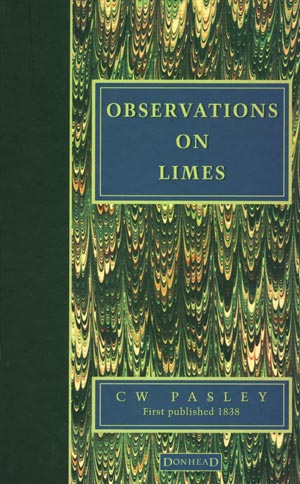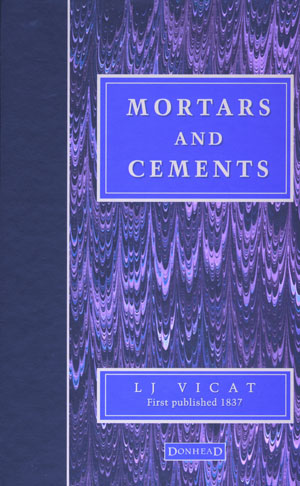This website uses cookies so that we can provide you with the best user experience possible. Cookie information is stored in your browser and performs functions such as recognising you when you return to our website and helping our team to understand which sections of the website you find most interesting and useful.
Lime Mortars
Preparation and Use of Lime Mortars By Pat Gibbons
Historic Scotland Technical Advice Note 1. A guide to the principles underlying the use of lime mortars in re-pointing and masonry consolidation, including advice on materials, specification and site practice.
2003, A4, 76 pages, illustrated
Hot Mixed Lime and Traditional Mortars by Nigel Copsey
A very useful manual for those looking to understand or use hot-mixed mortars, offering practitioners, specifiers and others, clear guidance on various methods of mixing and best practice.
2019 Crowood Press
The use of lime mortar in traditional buildings Historic Scotland
Historic Scotland Short Guide No 6. A background to the history and use of lime mortars in traditional buildings, the sourcing of raw materials, preparation of lime mortars for repairs and how to recognise and reduce the risk of failure.
2014 Available as a download
Hydraulic Lime Mortar for Stone, Brick and Block Masonry By Geoffrey Allen, Jim Allen, Nick Elton, Michael Farey, Stafford Holmes, Paul Livesey and Mileva Radonjic
Best Practice guide to using hydraulic lime mortar invaluable for all building practitioners, contractors and tradesmen specifying or handling hydraulic lime on site.
2003, 104 pages
The use of lime-based mortars in new build NHBC Foundation
Technical annex for use with BS 5628-1:2005 on the structural use of unreinforced masonry made with natural hydraulic lime mortars. Free to download from the NHBC Foundation website as a pdf file (1.8 MB).
Lime and Lime Mortars By A.D. Cowper
Provides a classification of lime and a state of the art review of its various uses in building construction and repair, of substantial interest and practical value since the methods, terminology and practices detailed by Cowper are still valid today.
1927 (facsimile 1998), 96 pages
Observations on Lime, Cements, Mortars, Stuccos and Concrete By Sir Charles Pasley
Observations on Limes, Calcareous Cements, Mortars, Puzzolanas, Natural and Artificial, together with Rules deduced from Numerous Experiments for Making an Artificial Water Cement Equal in Efficiency to the best Natural Cements of England.
1847 (facsimile 2010), 228 pages, hardback
Observations on Limes By Sir Charles Pasley, Introduction by Michael Wingate
A fascinating insight into the developments using lime during the eighteenth and early nineteenth centuries. Michael Wingates excellent introduction to this edition offers a helpful present day perspective of the work undertaken on lime in that period, and shows how relevant such research is to conservation practitioners and others currently specifying or directly working with lime.
1838 (facsimile 1997) 160 pages, hardback
Mortars and Cements By L J Vicat, Translated by Capt. J.T. Smith
The classification which Vicat prepared is still valid today and enables the best use to be made of lime, particularly for hydraulic works. Smiths enthusiastic notes are as exciting as Vicat’s text on how to choose and use the right limes.
1837 (facsimile 1997) 22cm, 352 pages, hardback
Search publications
Categories
Become a member
Members of the Building Limes Forum form a community of lime enthusiasts and practitioners, most of whom are producers, suppliers, specifiers or users of lime.
Useful documents
Contact Building Limes Forum
Building Limes Forum
Riddle’s Court
322 Lawnmarket
Edinburgh, EH1 2PG, UK

